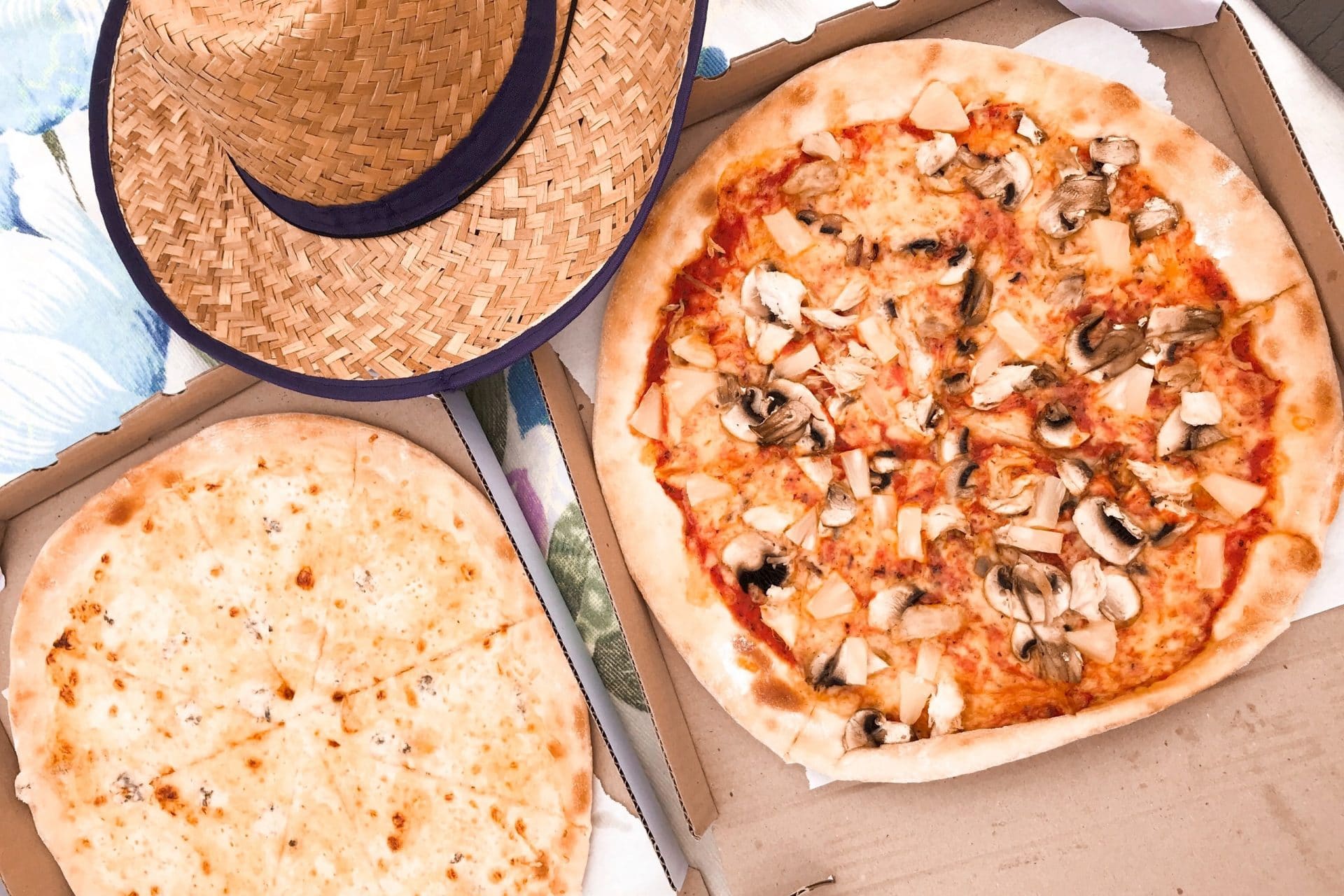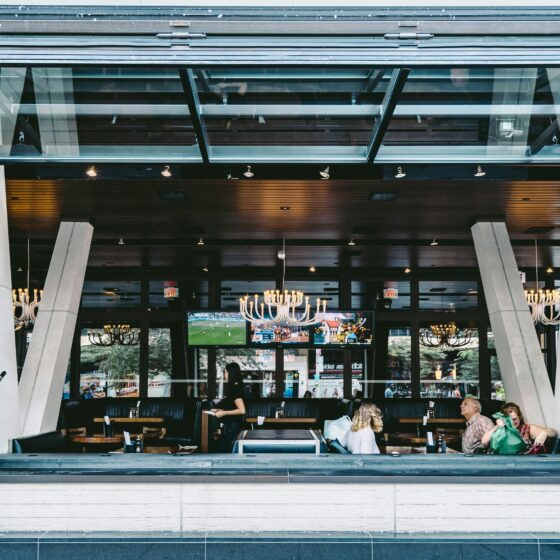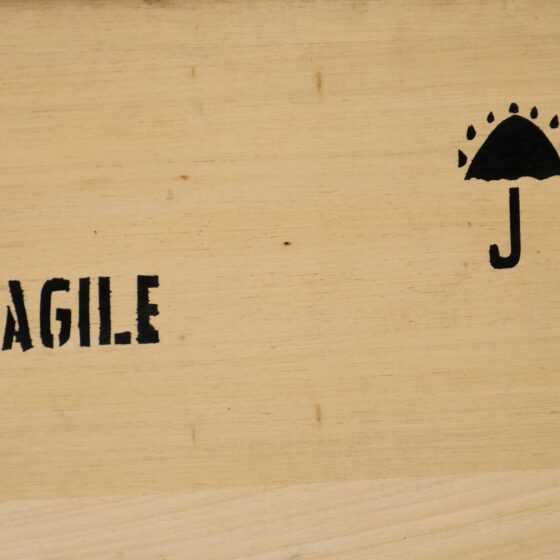The online food delivery market’s worldwide revenue was expected to rise to $151.5 billion in 2021. This is largely because the current world situation is encouraging us all to stay at home. Adjusting to the situation can’t go smoothly for everyone, but one thing’s for sure: our habits and lives are changing. This is why people have started ordering food more than they ever did before. With no opportunities to visit our favorite restaurants, the food delivery statistics are changing more and more.
Whether you’re a college student, a working parent, or a remote worker, you probably order food yourself. If you want to know what people have been ordering the most, what the biggest food delivery companies are, and how the food delivery market looks, you’re in the right place. Here’s all the relevant information about the food delivery industry.
The Top 10 Most Interesting Food Delivery Stats
- Due to COVID-19, 13% of the US restaurant market was taken up by online food delivery.
- The online food delivery market’s worldwide revenue was expected to rise to $151.5 billion in 2021.
- US consumers spent $11 billion on pizza delivery last year, according to delivery of food statistics.
- The UK food service delivery market was worth around £8.5 billion in 2019 ($11.17 billion).
- By 2024, the number of people using food delivery services online is projected to reach 96.9 million in Europe.
- Cauliflower pizza rose in popularity by 650% last year.
- 34% of consumers aged 18–24 use online services for food delivery to get food from restaurants that don’t provide their own delivery services.
- In February 2020, 16% of parents used meal delivery apps.
- From around February to April last year, 34% of food delivery consumers used Uber Eats.
- Of those surveyed, 80% of Americans have ordered food for home delivery.
General Online Food Delivery Statistics
In this section, we’ll be looking at statistics that you should know about food delivery from all over the world.
1. Due to COVID-19, 13% of the US restaurant market was taken up by online food delivery.
(Statista)
Before the global pandemic hit, the food delivery market share was only 9%. Because of restaurants being forced to close and people not wanting to go out, the use of food delivery services increased. It’s expected that this trend will continue, and online food delivery will hold a market share of 21% by 2025.
2. The online food delivery market’s worldwide revenue was expected to rise to $151.5 billion in 2021.
(Ajot, Statista)
The worldwide market’s revenue was at $107.4 billion in 2019, before the global pandemic hit. It was expected that online food delivery platforms would have around 1.6 billion users throughout the world in 2021.
3. Online food delivery statistics for Canada predicted a revenue of $2,780 million in 2021.
(Statista)
Between 2021 and 2024, the industry is looking at an annual growth of around 7.70%. Furthermore, it is predicted that the revenue for online food deliveries will be about $3,472 million. Canada is one of the many countries seeing a boom in online food delivery due to the pandemic.
4. In 2020, China generated the most food delivery revenue.
(Statista)
Revenue in the food delivery segment in the US is expected to reach $26.527 billion this year. With an estimated compound annual growth rate of 5.1%, revenue should reach $32.325 billion by 2024. Comparatively, as food delivery statistics during the COVID-19 pandemic show, China generated a revenue of $51.514 billion just last year.
5. The main reason people ordered food for delivery in 2018 was that they didn’t feel like cooking.
(Grubhub)
Apart from the lack of desire for cooking (43%), people also ordered food because they wanted to satisfy a craving (30%). The third most common reason was saving time from cooking and cleaning (28%). The last two popular reasons included at-home game or movie nights (25%) or family night dinners (24%).
6. US consumers spent $11 billion on pizza delivery last year.
(Statista)
As the home food delivery statistics from the United States show, American consumers are spending more and more on pizza delivery. The amount of money spent increased by approximately $1.2 billion between 2018 and 2019. In 2018, the company with the most pizza deliveries in the US was Domino’s Pizza, representing a 31.1% share of consumer spending in this segment.
7. Subscribers made up 17% of Postmates’ customers in July last year.
(Second Measure)
One of the ways food delivery services can attract and keep customers is by offering a subscription. Postmates has done this for some time. What’s more, 18% of DoorDash customers subscribe to their services.
Food Delivery Industry Statistics
Here, we’ll be focusing on the US and European food delivery markets.
8. The UK food service delivery market was worth around £8.5 billion in 2019 ($11.17 billion).
(Statista)
Even though phone orders are still pretty popular in the UK, the main reason the number of food delivery orders is growing is the rise of online delivery options. The two biggest services in the UK are Just Eat and Deliveroo.
9. By 2024, the number of people using food delivery services online is projected to reach 96.9 million in Europe.
(Statista)
According to the food delivery stats, the number of users is growing everywhere. For example, this same segment should have 13.1 million online users in the UK alone within the next four years.
10. Doordash is the most likely company for other brands’ users to turn to.
(Second Measure)
DoorDash, GrubHub, Uber Eats, Postmates, and Waitr are the leading food delivery services in the United States. Most of these often share customers—with DoorDash absorbing nearly 41% of the other companies’ customer bases when these users need to make a switch. Waitr is the least popular competitor, sharing only 1% or 2% of the other customers, meal delivery service statistics show.
11. In July 2020, 65% of San Franciscans ordered food via DoorDash.
(Second Measure)
DoorDash is the most-used food delivery app almost everywhere in the US—and San Francisco has the highest percentage of sales. Miami is the one city where this app covers only a 16% share of sales. Uber Eats is the most popular app there, with a 62% sales share.
Food Delivery Demographics
In this section, we’ll be exploring exactly who is ordering food to be delivered.
12. 34% of consumers aged 18–24 use online services for food delivery to get food from restaurants that don’t provide their own delivery services.
(Axios)
Although not every restaurant delivers food, people can still order their food online thanks to the many food delivery apps and websites out there. The 18–24 age group orders food this way the most, and it’s followed by the 25–34 age group with 30%, according to online ordering statistics.
13. In February 2020, 16% of parents used meal delivery apps.
(Axios)
The current situation with the coronavirus is changing things rapidly. For example, in March this year, parents increased their use of delivery apps to 20%, according to the latest food delivery usage statistics. Non-parents have also increased their use of these apps, though in a less dramatic manner—they went from 27% to 28%.
14. Of Grubhub’s users in 2018, 59% were men who ordered at least once a week.
(Grubhub)
When it comes to gender differences, men ordered much more food than women did, but the choices of the two groups were rather similar. The food delivery statistics show that only 36% of female Grubhub consumers used this service weekly, and their top food choices were Chinese (32%), Mexican (27%), and burgers (25%). Men mostly ordered burgers (31%), BBQ (27%), and Chinese (23%).
15. When ordering meal delivery on a date, 41% of women prefer pizza.
(Grubhub)
Men and women also had slightly different opinions on food delivery for date night, US food delivery statistics show. While most women preferred ordering pizza for the occasion, only 29% of men felt the same. Women were also more in favor of sushi (20%) compared to men (12%). When it comes to BBQ, 25% of men preferred it, as opposed to only 11% of women.
16. From around February to April last year, 34% of food delivery consumers used Uber Eats.
(Forbes)
The current situation with the coronavirus has left people ordering more food online, according to food delivery market statistics. Over a three-month period, consumers mostly used Uber Eats. DoorDash follows with 33% of the total, Grubhub is third with 21%, and Postamates takes fourth place with 12%.
Facts About Food Delivery Apps
Here, we’ll be looking specifically at popular delivery apps.
17. Cauliflower pizza rose in popularity by 650% last year.
(Grubhub)
Vegan options are getting the recognition they deserve. Both vegetarian and vegan-friendly meals have grown immensely in popularity on meal delivery apps. Spicy brussels sprouts were the second most ordered option with 622%, food delivery app statistics show. Portobello empanadas have grown 601% in popularity, while black bean and sweet potato tacos increased in popularity by 513%.
18. Indiana had the fewest vegan meal orders in 2019.
(Grubhub)
Meanwhile, the state of New York had the most vegan options ordered, followed by California. However, the trend didn’t grow everywhere, proven by Indiana. Iowa, North Carolina, Missouri, and Idaho are other places where people didn’t order much vegan food over these apps.
19. A least one in 4 food delivery drivers admits to eating the food they deliver.
(NPR)
Food delivery driver statistics show some pretty interesting data. Namely, it’s pretty hard to resist the smell of some of these mouth-watering meals. In fact, a study conducted by US Foods on drivers between 18 and 77 years old found that nearly 30% of them couldn’t resist the temptation.
20. Of those surveyed, 80% of Americans have ordered food for home delivery.
(Grubhub)
In times like these, when most people are working from home, it’s not surprising that most of the time, food is ordered from home, meal delivery statistics show. The next most popular location where food is delivered is the workplace (35%). The last three most common locations for food deliveries are friends’ places (32%), vacation stays (18%), and work travel stays (14%).
To Sum Up
Whatever your gender, age, occupation, or relationship status, chances are that you’ve ordered food at least once in your life. Thanks to its convenience, ordering food has become everyone’s new favorite practice. You can even use meal delivery services where you can order your week’s food ahead of time, like Freshly that we’ve reviewed.
As the food delivery statistics for 2022 show, this trend is only growing. With the further development of technology, these services will only get better and more efficient, and we’ll be there to enjoy all the comfort and delicious food this trend will have to offer in the future.
FAQ
What percentage of delivery drivers eat?
US Foods conducted a recent study, questioning over 500 delivery drivers and more than 1,500 customers. More than half of the drivers (54%) said that they were tempted by the smell of the food, and 30% of them said that they’ve actually eaten the food they were delivering.
(NPR)
Which food delivery app is used the most?
Data from June 2020 shows that the largest share of monthly sales belongs to the DoorDash food delivery app (44%). GrubHub followed DoorDash with 23%, which is close to the same percentage of people who ordered food from Uber Eats. However, when it comes to the Uber Eats app, it’s hard to distinguish some food sales from Uber rides.
(Fox Business)
Why use online food delivery, and why is it popular?
According to the food delivery app, Doordash, the reason third-party food delivery apps are so popular is that they are incredibly convenient. These apps make it super simple to order your favorite restaurant meals and have them delivered right to your doorstep. The platforms also offer a variety of choices, which is another reason they are so popular.
(Doordash)
Who uses food delivery?
Research shows that younger people are more likely to make use of food delivery apps. 63% of people between the ages of 18 and 29 use these apps. 51% of people aged between 30 and 44 use these apps. The older people become, the less likely they are to use food delivery apps.
(Zion & Zion)
Who is the biggest food delivery service?
At the beginning of 2020, the Indian food delivery services company Zomato acquired the Indian operations of Uber Eats. Together, Zomato and Uber Eats India are expected to cover over half the market share. According to the food delivery statistics, the Asia Pacific region represented the largest online meal delivery services market last year.
Even though DoorDash dominates the North American market, Uber Eats is the most successful global home food delivery service, statistics show, with orders from 127,800 restaurants in more than 25 countries.
(Business Wire, Thinknum)













